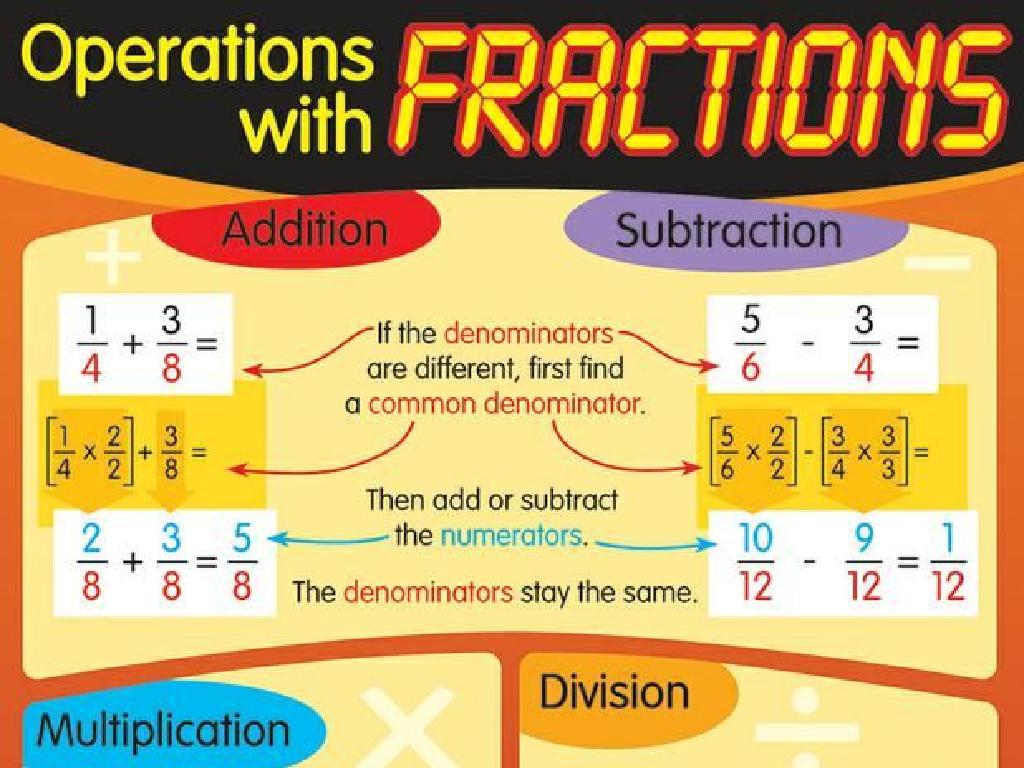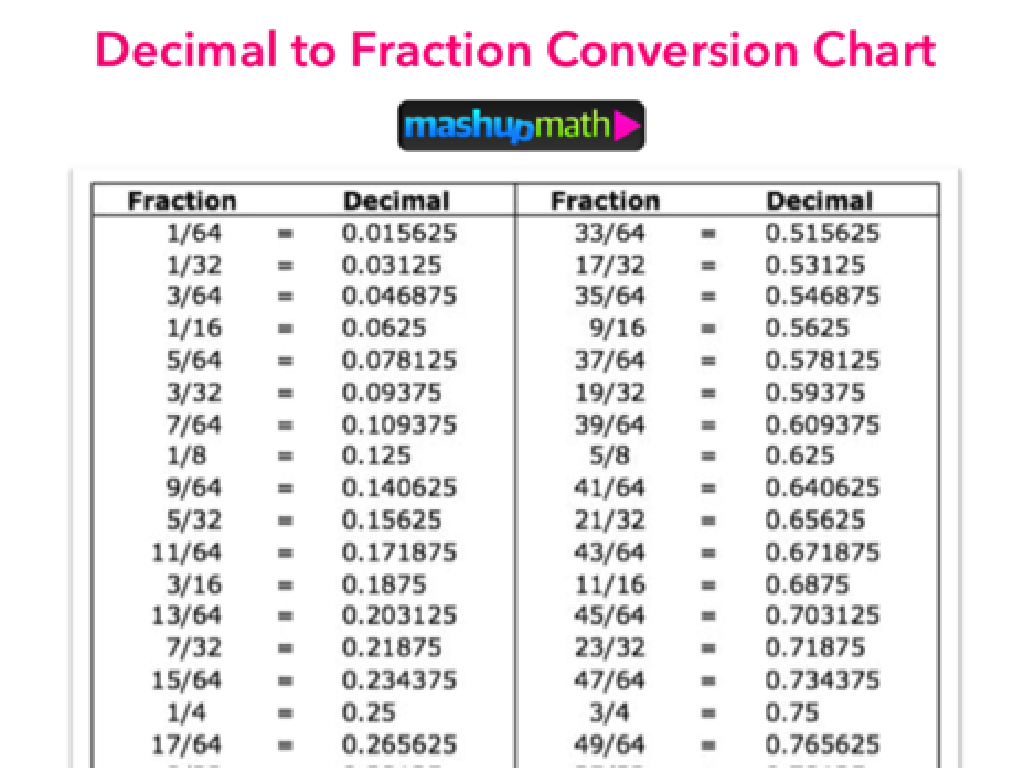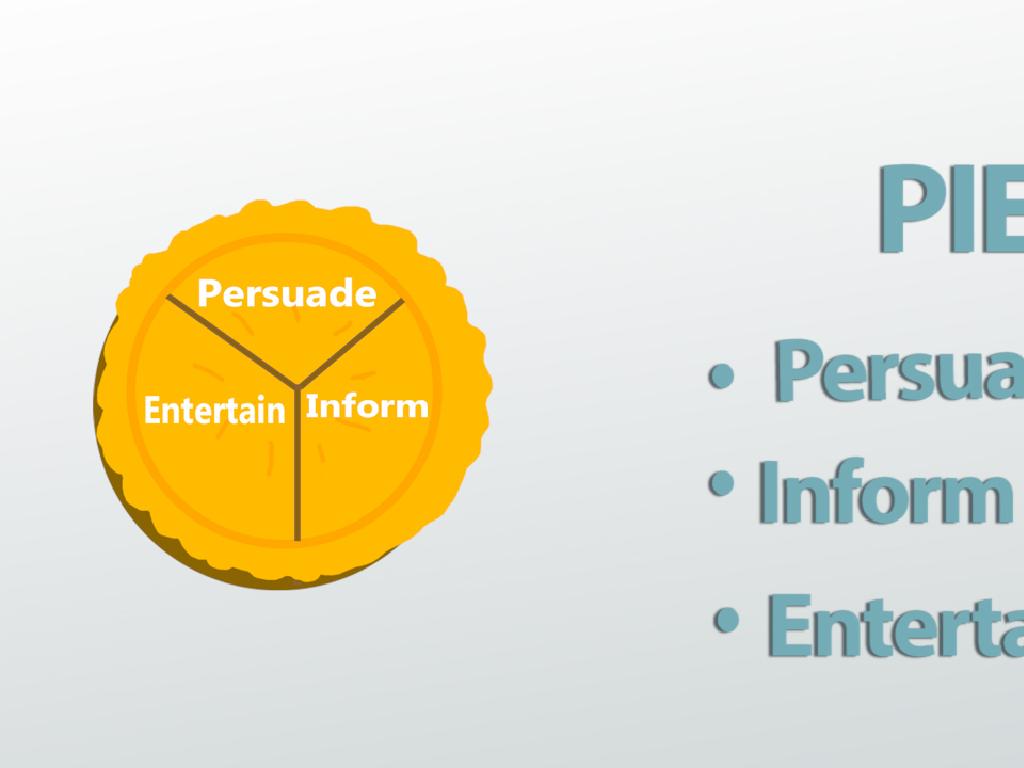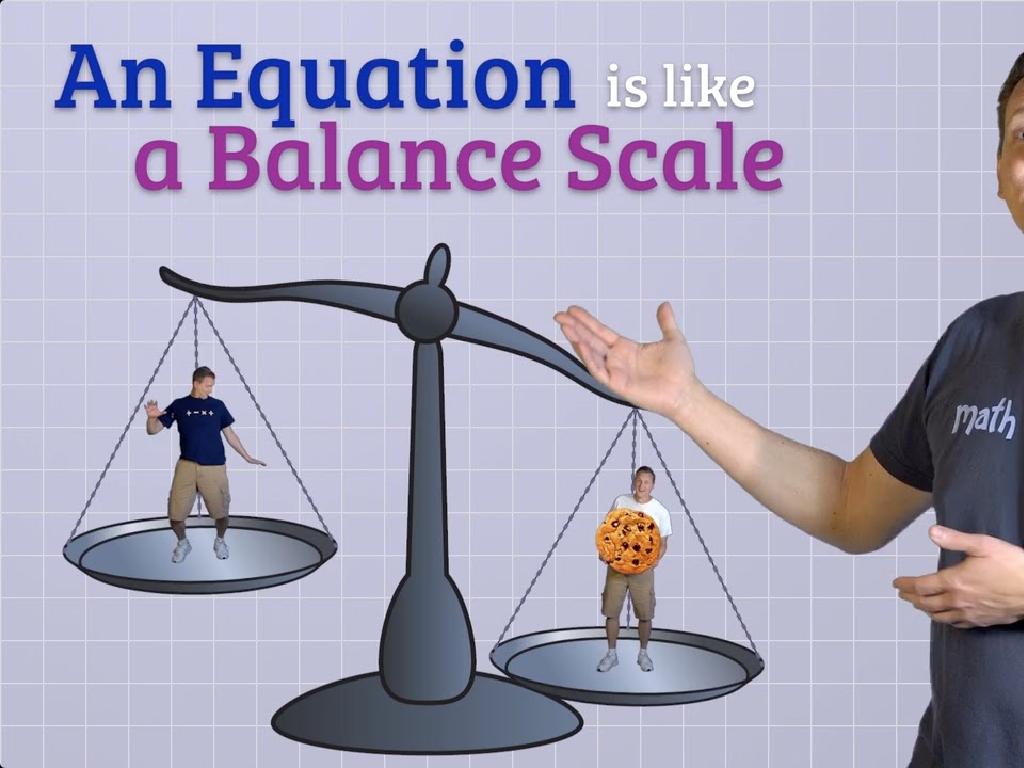Subtraction Sentences For Word Problems - Up To 10
Subject: Math
Grade: First grade
Topic: Subtraction Word Problems Up To 10
Summary: This first grade math presentation helps students master subtraction word problems up to 10 by connecting subtraction to real-life stories and objects. Learners will explore subtraction sentences, identify minuend, subtrahend, and difference, and practice writing equations like 8 - 3 = 5. Through hands-on activities, interactive stories, and a classroom scavenger hunt, students build problem-solving skills and gain confidence in solving subtraction problems using numbers and everyday items.
Please LOG IN to download the presentation. Access is available to registered users only.
View More Content
Welcome to Subtraction!
– Learning to take away
– Subtraction shows what’s left
– If you have 5 apples and eat 2, subtraction tells us 3 are left.
– Practice with numbers 1-10
– We’ll subtract numbers like 7 – 4 or 9 – 5.
– Fun subtraction word problems
– We’ll read stories and find out how many items are left.
|
This slide introduces first graders to the concept of subtraction as a means of finding out how many items remain after some are taken away. Emphasize that subtraction is simply ‘taking away’ and use relatable examples like toys or snacks to illustrate this point. Encourage the students to think of subtraction as a fun activity rather than a challenge. Provide hands-on practice with numbers up to 10 to solidify their understanding. Prepare to engage them with simple word problems that they can relate to and enjoy solving.
Understanding Subtraction
– Subtraction means taking away
– It’s like removing items from a group.
– Numbers get smaller with subtraction
– Think of it as the opposite of adding.
– Example: Eating cookies reduces count
– Started with 5 cookies, ate 2, how many left?
|
This slide introduces the concept of subtraction to first graders by relating it to a simple and relatable activity – eating cookies. Explain that subtraction is the process of taking away from a total amount, which results in a smaller number. Use physical props like cookies or blocks to demonstrate this concept if possible. Encourage students to think of subtraction as the opposite of addition. After presenting the example, ask the students to visualize the scenario and solve it. This will help them understand the practical application of subtraction in everyday life. For homework, they could be asked to find examples of subtraction at home or in their environment.
Understanding Subtraction Sentences
– Subtraction sentence parts
– Minuend, subtrahend, difference
– Minuend: starting number
– If you have 10 apples and start eating them, 10 is the minuend.
– Subtrahend: number taken away
– If you eat 2 apples, 2 is the subtrahend.
– Difference: the result
– After eating, you have 8 apples left; 8 is the difference.
|
This slide introduces the basic components of a subtraction sentence, which are crucial for solving subtraction word problems. The minuend is the total or starting quantity, the subtrahend is the amount that is removed, and the difference is the remaining quantity. Use simple, relatable examples to illustrate these concepts, such as having a certain number of apples and eating some. This will help first graders visualize the process of subtraction. Encourage students to identify these parts in subtraction sentences and to use them when creating their own word problems. Reinforce the vocabulary by having students practice with physical objects or visual aids.
Reading Subtraction Sentences
– Understanding subtraction sentences
– Reading an example together
– ‘7 – 4 = 3’ is read as ‘Seven minus four equals three’
– Equals sign means balance
– The equals sign (=) shows both sides have the same value
– Practice with different numbers
– Try ‘5 – 2 = 3’ and ‘9 – 6 = 3’ as a class
|
This slide is aimed at helping first graders understand how to read subtraction sentences. Start by explaining that subtraction sentences are a way to show taking away numbers from a group. Use the example provided to demonstrate how to read the sentence aloud. Emphasize the importance of the equals sign, explaining that it shows balance and that both sides of the equation represent the same amount. Encourage the students to practice with different numbers, guiding them to read the sentences out loud. This will help them become familiar with the structure of subtraction sentences and understand the concept of equality. Provide additional examples and allow the students to create their own subtraction sentences to reinforce the lesson.
Creating Subtraction Sentences
– Start with total objects
– Count all the objects you have
– Choose objects to subtract
– Decide how many to remove
– Write the subtraction sentence
– Use numbers to show taking away
– Understand the result
|
This slide is aimed at teaching first graders how to create subtraction sentences from word problems. Begin by counting the total number of objects in the problem. Then, decide how many objects will be taken away, which introduces the concept of subtraction. Next, write the subtraction sentence using numbers and the minus sign to represent the action of taking away. For example, if there are 10 apples and we take away 2, the sentence is 10 – 2. Finally, explain the result of the subtraction, which in this case is 8 apples remaining. Encourage students to visualize the objects and use their fingers or physical counters to better understand the concept. Provide several examples and practice problems for the students to work on.
Solving Subtraction Word Problems
– Word problems are subtraction stories
– Imagine you have 10 apples and eat 2, how many are left?
– Find the subtraction sentence
– Look for numbers and words like ‘left’ or ‘take away’
– Let’s solve a problem together!
– We’ll do an example as a class to learn how!
|
This slide introduces first graders to the concept of subtraction within word problems. Start by explaining that word problems tell a story where we need to find and solve a subtraction sentence. Use simple, relatable examples to illustrate the concept, such as having a certain number of items and then taking some away. Guide the students through the process of identifying key words and numbers that signal subtraction. For the class activity, present a simple word problem and solve it together, step by step, ensuring that students understand how to extract the subtraction sentence from the story. Encourage them to visualize the problem and use their fingers or objects to represent the numbers involved.
Solving Subtraction Word Problems
– Start with total balloons
– Tommy starts with 8 balloons
– Count balloons that fly away
– 3 balloons fly away from Tommy
– Write the subtraction sentence
– The sentence is 8 – 3 = ?
– Solve the subtraction problem
– Subtract to find out: 8 – 3 = 5
|
This slide is aimed at helping first graders understand how to approach and solve subtraction word problems. Begin by reading the problem and identifying the total number of items. Then, determine how many items are taken away. Teach the students to translate the word problem into a subtraction sentence, and finally, solve the equation. Use the example of Tommy’s balloons to illustrate the concept in a relatable way. Encourage students to visualize the problem with actual objects or drawings to aid their understanding. During the class, you can provide similar word problems and guide the students through the steps, ensuring they grasp the concept of subtraction in a practical context.
Let’s Practice Subtraction!
– Try a subtraction word problem
– Find the total and amount removed
– Write the subtraction sentence
– Example: If you have 10 apples and eat 2, how many do you have left? 10 – 2 = ?
– Solve the problem
– Use fingers or objects to help count
|
This slide is designed to engage students in a hands-on activity to practice subtraction. Encourage them to identify the total number of items in the problem and determine the number that is taken away. They should then write down the subtraction sentence that represents the problem. To solve it, students can use physical objects like counters or draw pictures to visualize the subtraction. For example, if a word problem states that there are 8 balloons and 3 fly away, the subtraction sentence would be 8 – 3 = 5. Provide guidance on how to set up the problem and encourage students to check their work. Possible activities include using manipulatives, drawing, or acting out the problem. This interactive approach helps solidify their understanding of subtraction in a fun and engaging way.
Class Activity: Subtraction Scavenger Hunt
– Let’s hunt for objects to subtract!
– Count the objects you find
– Take some away and see what’s left
– Write a subtraction sentence
– Example: If you find 5 blocks and take away 2, write ‘5 – 2 = 3’
|
This interactive activity is designed to help first graders understand subtraction in a fun and engaging way. Set up various stations around the classroom with different sets of objects. Instruct students to count the objects at each station, then physically remove a few and count how many are left. They should then write a subtraction sentence representing this action (e.g., ‘7 – 4 = 3’). Encourage them to use their fingers or other counting strategies if needed. Possible variations of the activity could include pairing students to work in teams, using themed objects, or incorporating a storytelling element where each station represents a part of a story. The goal is to reinforce the concept of ‘taking away’ in subtraction.





